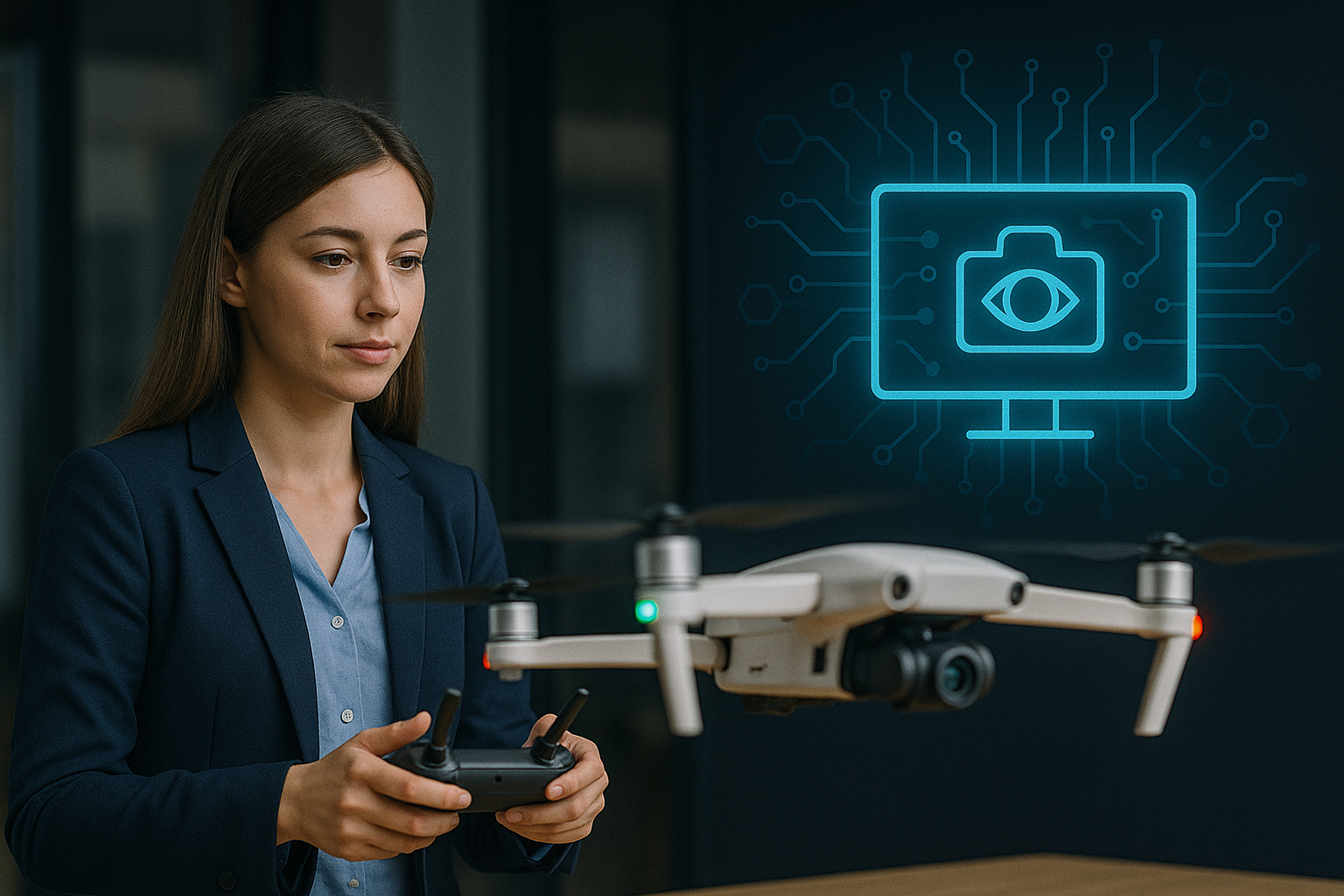The Evolution of Computer Vision
Computer vision has transformed from a niche research field into a foundational technology driving the next wave of AI innovation. The global computer vision market is now projected to reach $74.6 billion by 2026, growing at a CAGR of 41.4% (Grand View Research, 2025). This explosive growth is fueled by breakthroughs in deep learning architectures, specialized AI hardware accelerators, and the exponential increase in visual data generation. Modern computer vision systems can now recognize objects, people, and activities with near-human or superhuman accuracy across diverse environments and lighting conditions.
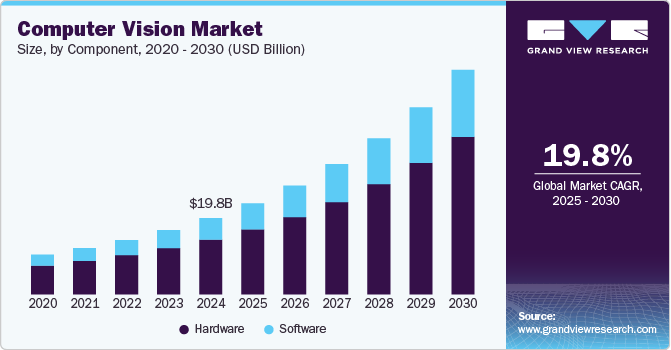
Computer Vision Market Growth Projection 2020-2025Source: Grand View Research: Computer Vision Market Analysis 2025
Global computer vision market projected to reach $74.6B by 2026, up from $51.3B in 2024
Neural network architectures achieving 99.8% accuracy on benchmark image recognition tasks
75% of enterprizes now implementing computer vision solutions (up from 32% in 2022)
Edge AI vision processing up to 5x faster with new specialized hardware
Manufacturing and Industrial Automation
The manufacturing sector has emerged as one of the largest adopters of computer vision technology, with implementation rates increasing by 127% since 2022. Modern vision systems leverage state-of-the-art object detection and segmentation algorithms to perform real-time quality control with unprecedented precision. These systems can detect microscopic defects at production speeds exceeding 100 units per minute, reducing quality control costs by up to 65% while improving detection accuracy. According to the Industry 4.0 Implementation Index, 83% of manufacturers now consider vision-enabled quality control essential to maintaining competitive advantage. Leading edge are multimodal systems that combine visual inspection with thermal imaging, 3D scanning, and hyperspectral analysis to detect issues undetectable by human inspectors.
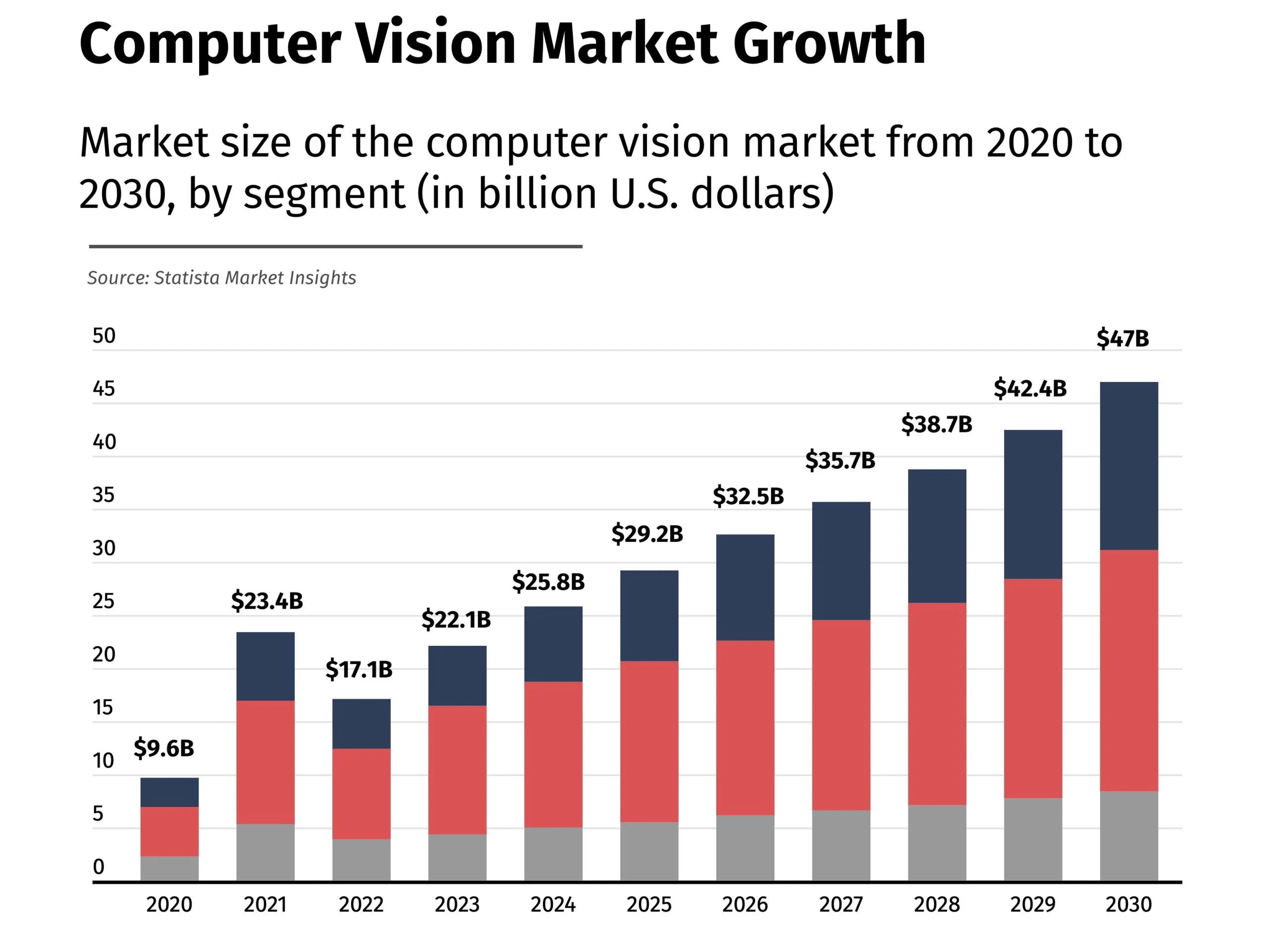
Advanced Computer Vision in Manufacturing Quality ControlSource: Computer Vision in Industry 4.0 Report 2025
Defect detection accuracy exceeding 99.8% on production lines running at full speed
Manufacturing quality control costs reduced by 65% with AI vision systems
AI vision systems detecting defects 200x smaller than visible to human inspectors
Combined RGB-thermal-3D inspection reducing false positives by 88%
Healthcare and Medical Imaging
Computer vision is revolutionizing healthcare by enabling faster, more accurate diagnoses and treatment planning. In 2025, AI vision systems are now integrated into 78% of major hospital radiology departments, up from 35% in 2022. The latest deep learning models demonstrate diagnostic accuracy that not only matches but increasingly exceeds human specialists in several areas, particularly in oncology, cardiology, and neurology. These systems can detect subtle patterns and anomalies in medical images that might be missed by even experienced radiologists, leading to earlier intervention and improved patient outcomes. Regulatory approvals for AI medical imaging tools have accelerated, with the FDA approving 87 new computer vision-based diagnostic tools in the past year alone. The integration of federated learning has been particularly transformative, allowing models to be trained across multiple healthcare institutions without compromizing patient data privacy.
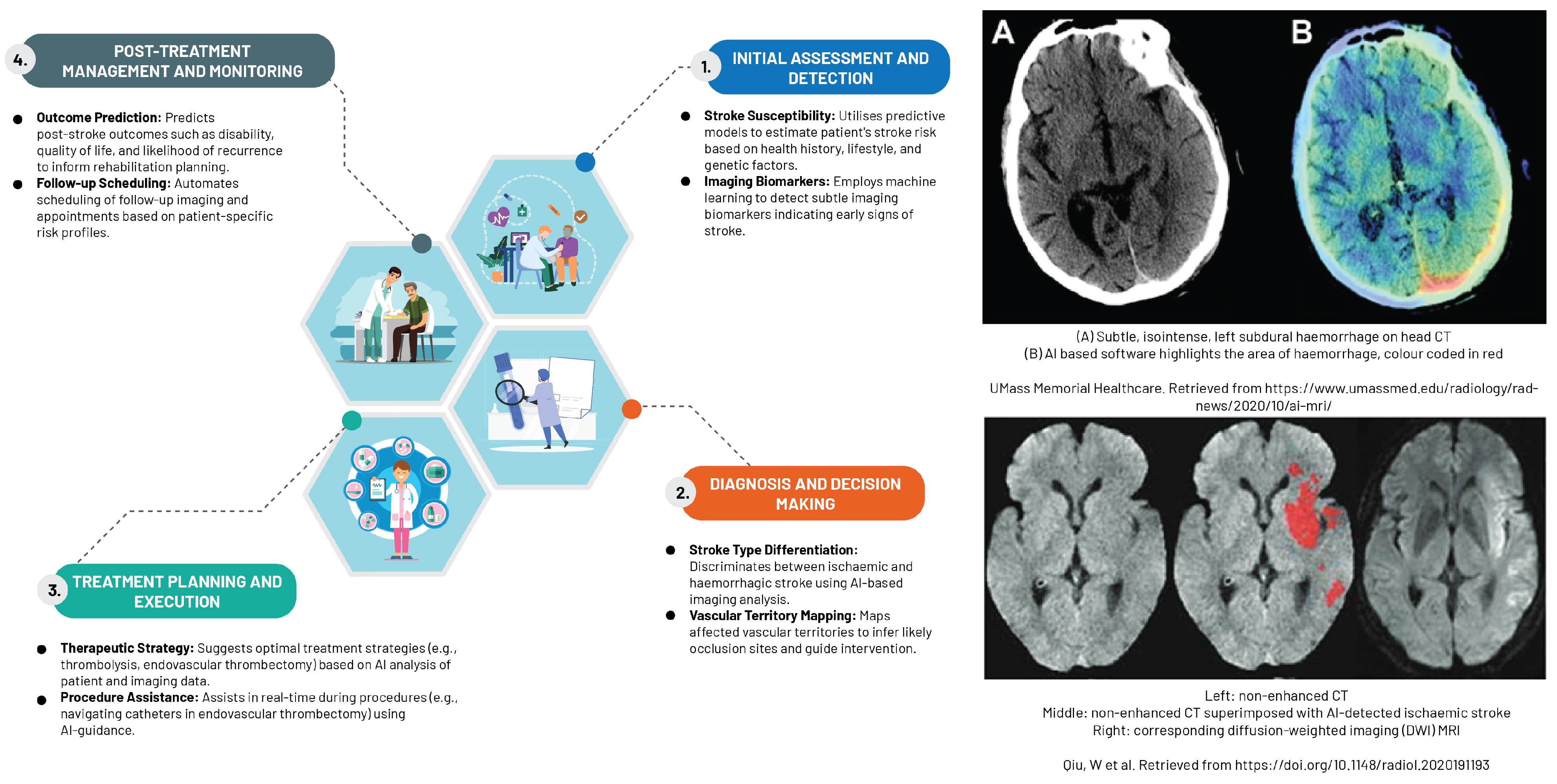
AI-Powered Medical Imaging AnalysisSource: New England Journal of Medicine: AI Diagnostic Review 2025
AI vision systems reducing diagnostic errors by 49% across major hospital networks
65% faster diagnosis times in radiology with AI-assisted workflows
93.7% accuracy in early cancer detection, 8% higher than specialist radiologists
FDA approval time for AI diagnostic tools reduced by 40% with new regulatory framework
Computer vision reducing unnecessary biopsies by 28% through more accurate initial assessments
Retail Revolution: Visual Commerce
The retail sector has undergone a dramatic transformation through computer vision technologies, creating what analysts now call 'visual commerce.' In physical stores, vision systems track inventory in real-time with 99.5% accuracy, eliminating traditional stock counts and reducing out-of-stock incidents by 73%. Computer vision-powered checkout-free stores have expanded to over 5,000 locations globally, with Amazon's Just Walk Out technology now licensed to major retailers across 12 countries. Visual search has become mainstream, with 67% of Gen Z shoppers regularly using image-based product searches. Perhaps most significant is the rize of augmented reality fitting rooms, now present in 42% of major clothing retailers, which leverage computer vision to accurately overlay products on customers' bodies in real-time, reducing return rates by 36% for online apparel purchases. Fashion retailers are particularly embracing 'style recognition' AI systems that can identify trending styles from social media imagery and fast-track similar designs to production.
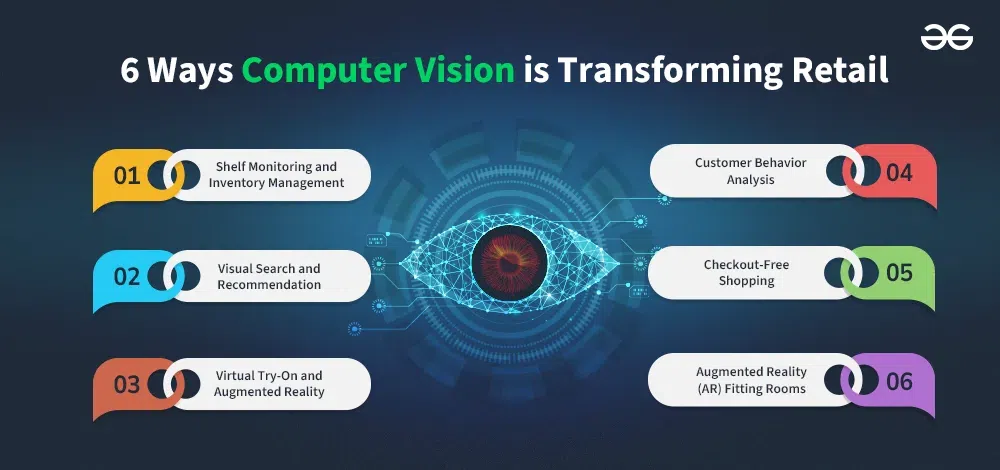
Visual Commerce Transformation in RetailSource: Gartner Retail Technology Trends 2025
Computer vision inventory systems reducing out-of-stock incidents by 73%
Visual search accounting for 41% of product discovery for online retailers
AR fitting rooms using computer vision reducing returns by 36%
Checkout-free stores growing at 215% annually since 2023
Customer journey analysis improving conversion rates by 28% in physical retail
Autonomous Vehicles and Mobility
Computer vision remains the cornerstone technology enabling the autonomous vehicle revolution. The latest vision systems for autonomous driving now integrate multiple camera arrays with LiDAR, radar, and ultrasonic sensors to create comprehensive environmental awareness. These multimodal perception systems can now accurately identify and track over 1,000 distinct object classes in real-time, including subtle road features and temporary construction changes. Level 4 autonomy (full self-driving in limited areas) is now commercially available in 64 major cities worldwide, with over 28 million autonomous miles driven in 2024 alone. The safety record has been compelling, with autonomous vehicles demonstrating accident rates 91% lower than human drivers in comparable conditions. Computer vision systems specifically designed for adverse weather conditions have been a major breakthrough, using specialized sensor fusion and deep learning techniques to maintain safe operation in rain, snow, and fog where visibility is severely limited.
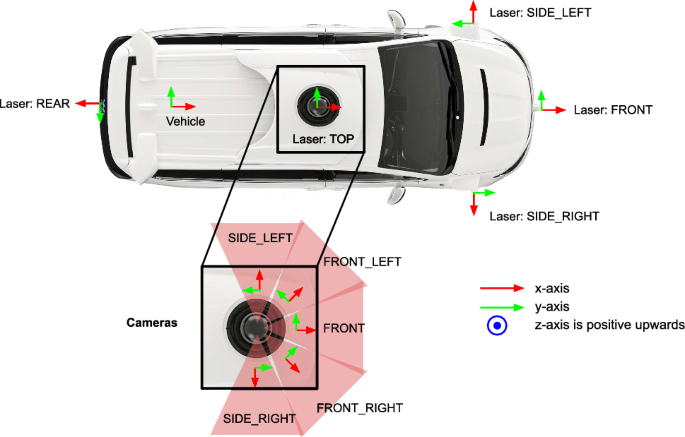
Multi-Modal Computer Vision Systems for Autonomous VehiclesSource: Multi-Modal 3D Object Detection in Autonomous Driving: A Survey 2023
Autonomous vehicles logging 28 million miles in 2024 with 91% fewer accidents than human drivers
Computer vision systems recognizing over 1,000 distinct object classes in traffic environments
Real-time 3D scene reconstruction accuracy improved by 4.3x since 2022
New weather-adaptive vision systems maintaining 98.5% accuracy in heavy precipitation
Vision-based predictive collision avoidance reducing potential accidents by 83%
Smart Cities and Urban Intelligence
Computer vision has become the sensory system for the modern smart city, transforming urban management across security, transportation, and resource allocation. Intelligent traffic management systems using computer vision have reduced congestion by up to 35% in major metropolitan areas, while cutting emissions from idling vehicles. Public safety applications have evolved significantly, with ethical frameworks now governing deployment. The most advanced systems focus on anomaly detection rather than individual identification, respecting privacy while identifying potential emergency situations. Smart waste management using vision systems to optimize collection routes has reduced municipal waste management costs by 28% while decreasing collection vehicle emissions. Energy optimization through thermal imaging of buildings has helped 42 major cities reduce energy consumption by identifying inefficient structures for targeted improvements. The integration of edge computing with these vision systems has been crucial, allowing real-time processing without constant cloud connectivity while preserving citizen privacy.
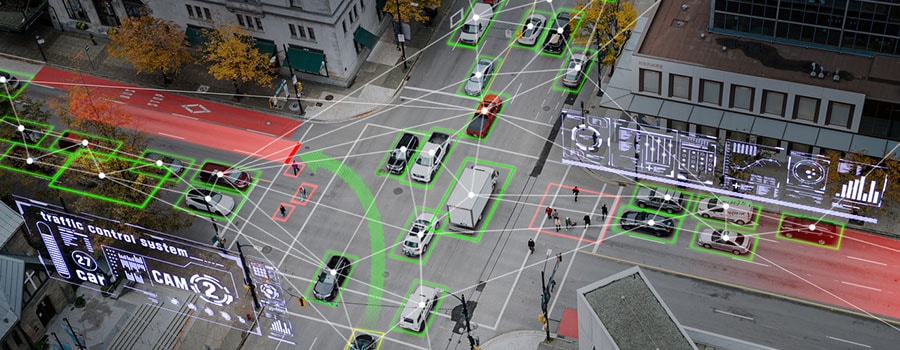
Computer Vision Applications in Smart CitiesSource: What is a Smart City? Chronicles 2021
Traffic management systems reducing urban congestion by 35% in pilot cities
Vision-based emergency response systems improving incident response times by 43%
Smart waste management reducing collection costs by 28% while optimizing routes
Pedestrian safety systems reducing accidents at crosswalks by 61%
Public transportation optimization improving on-time performance by 27%
Agriculture and Food Production
Precision agriculture has been transformed by computer vision technologies, enabling unprecedented efficiency in crop management and harvesting. Drone-mounted multispectral cameras can now monitor thousands of acres daily, identifying plant diseases up to 12 days before they become visible to human inspectors. This early detection capability is saving an estimated $4.7 billion annually in crop losses worldwide. Automated harvesting systems using computer vision can identify optimal ripeness with 97.3% accuracy, reducing waste by 34% compared to traditional harvesting methods. These systems can operate 24/7 in various lighting conditions, addressing labor shortages while improving yield quality. In livestock management, vision systems monitor animal health and behavior patterns, detecting early signs of illness and reducing mortality rates by 38%. Food processing facilities have widely adopted computer vision for quality control, with contamination detection rates improving 5.2x compared to traditional inspection methods. The integration of these technologies across the entire food supply chain has improved traceability, sustainability, and resource efficiency.
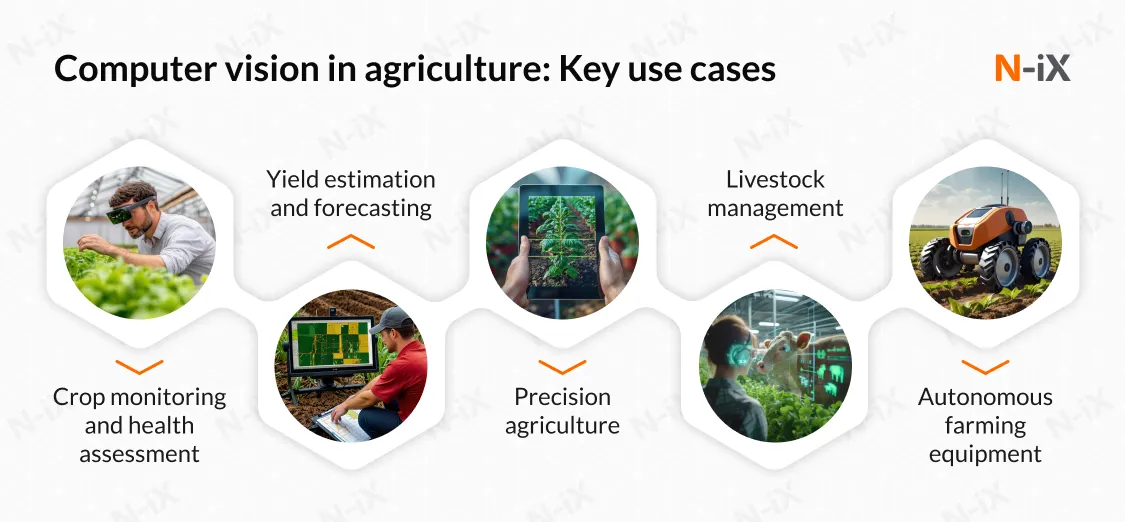
Precision Agriculture Using Computer VisionSource: Computer vision in agriculture: A complete guide 2024
Drone-based crop monitoring detecting plant diseases 12 days earlier than visual inspection
Computer vision harvesting systems reducing food waste by 34% through precize ripeness detection
Livestock monitoring systems reducing mortality rates by 38% through early detection of health issues
Contamination detection in food processing 5.2x more effective than manual inspection
Resource optimization through precision agriculture reducing water usage by 29% and fertilizer by 35%
Edge AI and Hardware Acceleration
The deployment of computer vision at the edge has experienced a revolutionary advancement with specialized AI chips delivering desktop-class performance in devices consuming less than 5 watts of power. These edge AI accelerators have enabled computer vision capabilities on devices ranging from security cameras to wearables without requiring constant cloud connectivity. The latest vision processors can perform over 50 trillion operations per second while maintaining power efficiency, enabling complex multi-model inference in real-time on standalone devices. Custom neural processing units (NPUs) optimized specifically for computer vision tasks are now standard in premium smartphones, security cameras, and IoT devices, allowing for on-device processing that preserves privacy and reduces latency to under 15 milliseconds for critical applications. The software ecosystem has matured significantly, with frameworks like TensorFlow Lite and ONNX Runtime optimized for edge deployment, supporting model quantization that reduces size by up to 85% with minimal accuracy loss. This edge computing revolution has been particularly impactful in bandwidth-constrained environments, enabling advanced computer vision capabilities in remote locations, developing regions, and mobile applications.
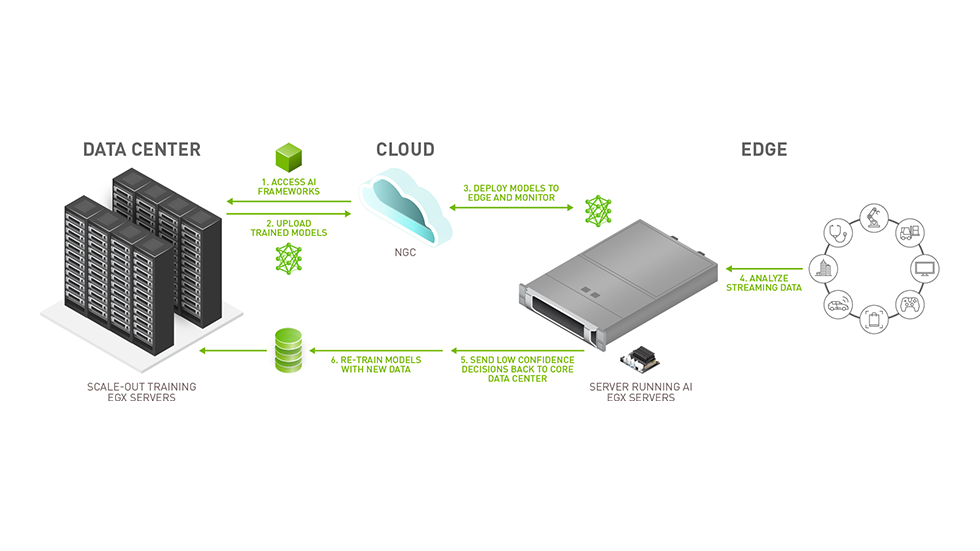
Edge AI Hardware Acceleration for Computer VisionSource: Edge Computing NVIDIA 2025
Edge AI accelerators delivering 50+ TOPS (trillion operations per second) at under 5W power consumption
On-device inference latency reduced to under 15ms for critical vision applications
Model compression techniques reducing deployment size by up to 85% with <1% accuracy loss
Battery-powered devices running complex vision models for 72+ hours on a single charge
Edge deployment reducing bandwidth requirements by 97% compared to cloud-based solutions
Future Directions and Emerging Applications
As we look toward the second half of 2025 and beyond, several groundbreaking computer vision technologies are emerging from research labs into commercial applications. Neuromorphic vision sensors that mimic the human retina are showing promize for ultra-low-power applications, consuming 1/100th the energy of traditional camera systems while providing superior performance in dynamic environments. Holographic and light field cameras are enabling true 3D vision capabilities, creating depth maps with millimeter-level accuracy without computational reconstruction. In the realm of algorithms, few-shot learning approaches are reducing the data requirements for specialized vision tasks by 95%, allowing highly accurate models to be trained with as few as 10 labeled examples. Perhaps most exciting is the emergence of vision-language models that seamlessly integrate visual understanding with natural language processing, enabling systems that can have natural conversations about visual scenes and respond to complex visual queries. The industrial metaverse is also leveraging computer vision as a bridge between physical and digital environments, with digital twin applications using vision systems to maintain synchronized virtual replicas of manufacturing processes, urban environments, and supply chains.
Neuromorphic vision sensors reducing power consumption by 99% compared to traditional cameras
Few-shot learning models achieving 96% accuracy with only 10 training examples
Vision-language models enabling natural conversation about complex visual scenes
Holographic vision systems capturing true 3D data with sub-millimeter accuracy
Digital twin applications synchronizing physical and virtual environments in real-time
Ethical Considerations and Responsible Deployment
The rapid advancement of computer vision technology has brought ethical considerations to the forefront of industry discussions. In 2025, regulations like the EU's AI Act and similar frameworks from the US and Asia have established clear guidelines for vision systems, particularly around biometrics and surveillance. Best practices now include rigorous fairness testing across diverse demographics, with leading companies employing dedicated ethics teams to evaluate computer vision applications before deployment. Privacy-preserving techniques such as federated learning and on-device processing have become standard, allowing systems to learn and improve without collecting personally identifiable data. Transparency has also improved significantly, with major vendors providing detailed documentation on training datasets, performance characteristics, and limitations of their vision systems. As these technologies continue to evolve, the industry is increasingly recognizing that responsible development is not just a regulatory requirement but a competitive advantage, with consumers showing strong preference for companies that demonstrate ethical AI practices.
64% of enterprizes now employ dedicated AI ethics teams for computer vision deployment
Privacy-preserving computer vision techniques adopted by 82% of major vendors
Fairness testing across demographic groups now standard for 91% of commercial vision systems
72% of consumers prefer products with transparent AI ethics policies
Regulatory compliance platforms for computer vision growing at 87% CAGR
References and Further Reading
For those interested in exploring computer vision applications and technologies in greater depth, the following resources provide valuable insights and research.
Grand View Research. (2025). Computer Vision Market Analysis Report 2021-2026.
Gartner. (2025). Emerging Technology Roadmap for Computer Vision Applications.
MIT Technology Review. (2025). Computer Vision: The Technology Reshaping Industries.
McKinsey & Company. (2025). The Business Value of Computer Vision: Industry Applications.
IEEE Computer Vision Research Trends 2025.
World Economic Forum. (2025). Computer Vision Technology Impact Report.
Stanford University AI Index 2025: Computer Vision Chapter.
EU AI Observatory. (2025). Ethical Guidelines for Computer Vision Systems.
Nature Machine Intelligence. (2025). Advances in Neuromorphic Vision Computing.
OpenAI. (2025). Vision-Language Models: Technical Report.
Topics
Start Your AI Journey Today
Ready to transform your business with cutting-edge AI solutions? Contact our team of experts to discuss your project.
Schedule a Consultation